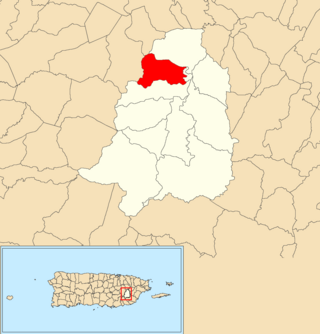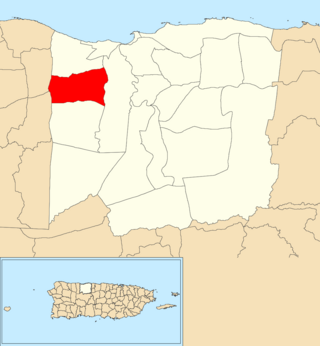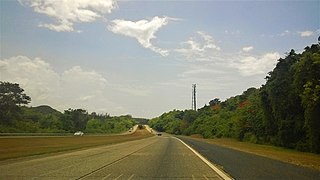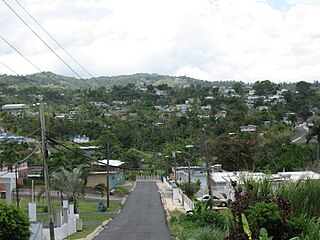
Hato Nuevo is a barrio in the municipality of Guaynabo, Puerto Rico. Its population in 2010 was 4,114.

Río is a barrio in the municipality of Guaynabo, Puerto Rico. Its population in 2010 was 2,791.

Santa Rosa is a barrio in the municipality of Guaynabo, Puerto Rico. Its population in 2010 was 16,904.

Candelaria is a barrio in the municipality of Toa Baja, Puerto Rico. Its population in 2010 was 23,343.

Llanos is a barrio in the municipality of Aibonito, Puerto Rico. Its population in 2010 was 6,840.

Hato is a barrio in the municipality of San Lorenzo, Puerto Rico. Its population in 2010 was 6,945.

Carreras is a barrio in the municipality of Arecibo, Puerto Rico. Its population in 2010 was 1,226.

Hato Arriba is a barrio in the municipality of Arecibo, Puerto Rico. Its population in 2010 was 8,495.

Miraflores is a barrio in the municipality of Arecibo, Puerto Rico. Its population in 2010 was 5,863.

Santana is a barrio in the municipality of Arecibo, Puerto Rico. Its population in 2010 was 5,253.

Hato Viejo is a barrio in the municipality of Arecibo, Puerto Rico. Its population in 2010 was 2,045.

Arenalejos is a barrio in the municipality of Arecibo, Puerto Rico. Its population in 2010 was 3,064. Arenalejos is near the center of Arecibo, west of Miraflores.

Arrozal is a barrio in the municipality of Arecibo, Puerto Rico. Its population in 2010 was 1,445.

Esperanza is a barrio in the municipality of Arecibo, Puerto Rico. Its population in 2010 was 1,882.

Factor is a barrio in the municipality of Arecibo, Puerto Rico. Its population in 2010 was 8,001.

Islote is a barrio in the municipality of Arecibo, Puerto Rico. Its population in 2010 was 5,665. "Birth of a New World", a giant sculpture of Christopher Columbus on a ship, is located in Islote.

Sabana Hoyos is a barrio in the municipality of Arecibo, Puerto Rico. Its population in 2010 was 10,745.

Morovis Sud also called Morovis Sur is a barrio in the municipality of Morovis, Puerto Rico. Morovis Sud has about 14 sectors and its population in 2010 was 4,208.

Unibón is a barrio in the municipality of Morovis, Puerto Rico. Unibón has fifteen sectors and its population in 2010 was 3,853.






















